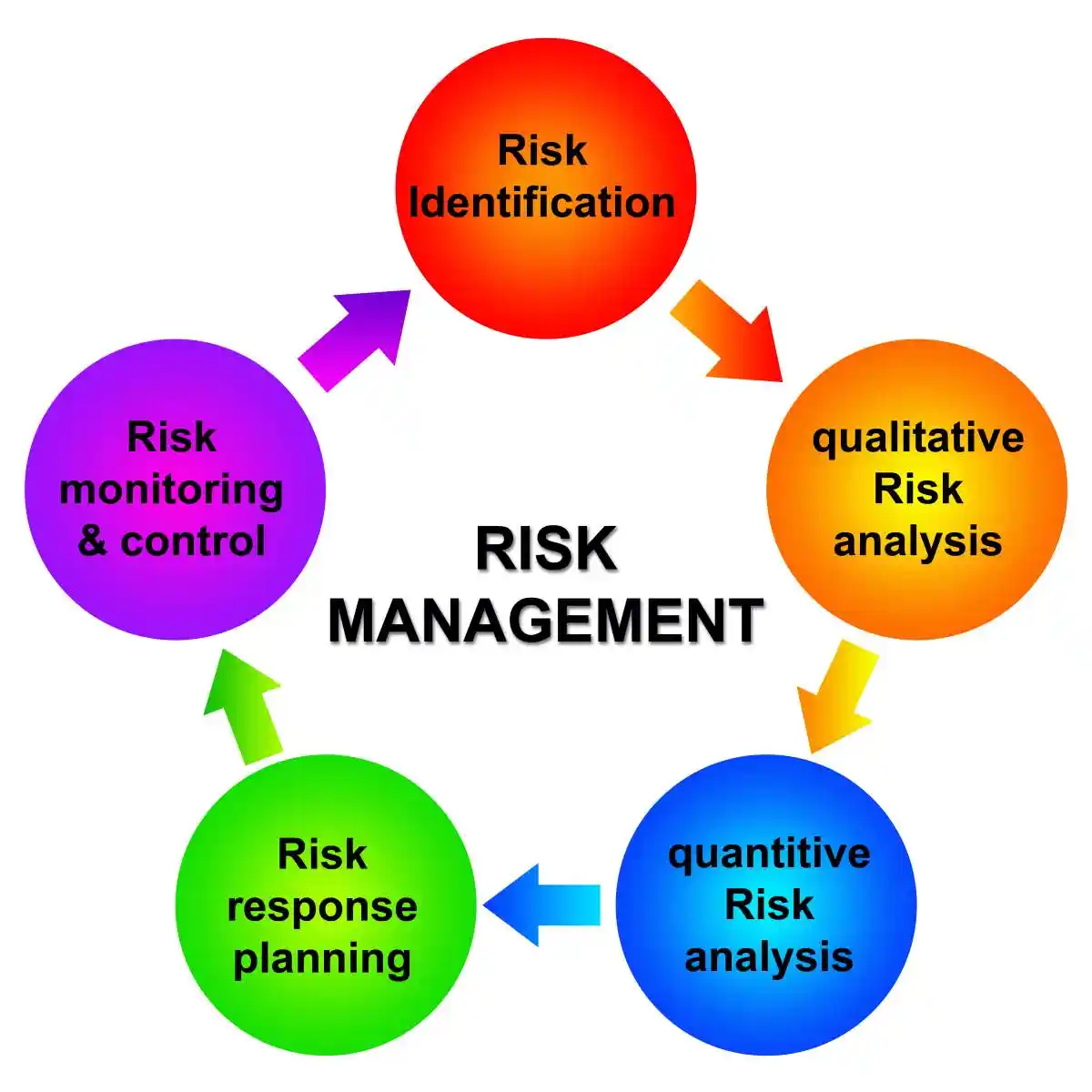Introduction to Manipulating Expenses for Financial Reporting
- Manipulating expenses for financial reporting is a systemic problem that costs investors billions of dollars each year. Financial statement manipulation, also known as creative accounting, happens when companies intentionally alter their financial reports to show a misleading picture of their financial health. The Securities and Exchange Commission (SEC) and lawmakers have taken many steps to stop this practice, but it remains common among publicly traded companies.
- When companies commit fraud against investors by manipulating their financial statements, it creates serious financial damage. Top executives at major corporations might “cook the books” to paint a positive picture, and with good reason too. They could also tweak financial statements to qualify for bonuses tied to specific performance targets.
- Companies can interpret generally accepted accounting principles flexibly, which makes detecting expense manipulation really tough. Many organizations and people have strong reasons to do this – they want to hit earnings targets, get financing, or boost their stock prices. Bad actors also hide their losses through various tricks like speeding up revenue recognition, pushing expenses to later dates, front-loading pre-merger costs, and playing with pension plans.
- Financial statement fraud happens when organizations knowingly misrepresent their financial information. This fraud usually stems from financial pressure, poor internal controls, and complex accounting that creates chances to manipulate data. This piece will help you learn about expense manipulation methods, legal risks, and ways to protect your investments from financial statement fraud.

1. Understanding Expense Manipulation in Financial Reporting
- Companies often manipulate their expenses in financial statements to paint a different picture of their financial health.
- This happens when they deliberately understate or incorrectly record expenses to boost their bottom-line earnings. The goal is usually to meet specific targets or keep investors happy.
Definition of Expense Manipulation
- Companies misrepresent their financial statements through various techniques that don’t properly record costs. This creates a gap between what’s reported and what’s real in terms of the company’s performance.
- Here’s how companies typically manipulate expenses:
- Falsified timing of expenses – They push current expenses to later periods to make earnings look better
- Improper capitalization of expenses – They record day-to-day costs as assets instead of expenses to spread them over time
- Inventory overstatement – They inflate inventory values to show lower costs and better profit margins
- Manipulating reserves or misrepresenting liabilities – They hide or understate what they owe to make their finances look stronger
- Companies do this to show better financial results than what exists. This affects how stakeholders value the company.
Difference Between Error and Fraud
- Intent makes all the difference between errors and fraud in financial reporting. Both lead to wrong statements, but they’re quite different.
- Errors are honest mistakes in financial statements. These can be:
- Simple math or clerical mistakes
- Missing or misunderstood facts
- Wrong application of accounting rules by mistake
- Expenses recorded in wrong accounts
- Fraud happens when someone tries to trick financial statement users on purpose. Fraudulent financial reporting usually involves:
- Changing or faking accounting records
- Leaving out important transactions
- Making up fake transactions
- Lying about business deals
- Breaking accounting rules on purpose
- The size of the mistake doesn’t matter when it comes to fraud. What matters is whether someone meant to do it or not.
Role of GAAP Flexibility in Misreporting
- Generally Accepted Accounting Principles (GAAP} sets the rules for financial reporting but leaves room for interpretation. This flexibility can help companies manipulate their numbers. Companies have choices in how they record income and expenses.
- The FASB creates these GAAP standards with built-in flexibility. This helps different types of businesses follow the rules, but it also creates chances for creative accounting that can hide the real financial picture.
- GAAP’s flexible areas that make manipulation possible:
- Subjective judgments – Companies can decide things like how long assets will last or what investments are worth
- Treatment options – There’s more than one way to record certain transactions
- Timing flexibility – Companies choose when to record some expenses
- Capitalization decisions – They decide which costs to spread out over time
- Even with GAAP’s rules about being open, financial statements might still have errors or misleading information. Most companies play by the rules, but some use these accounting choices to show what they want rather than what’s real.
2. Motivations Behind Manipulating Expenses
- Companies and executives manipulate expenses to gain strategic advantages beyond just inflating profits. They do this due to financial incentives, contract requirements, and business tactics that benefit both personal and corporate interests while compromising financial statement accuracy.
Executive Compensation Tied to Earnings
- Corporate executives’ pay often links directly to the financial performance of their companies. This creates a strong incentive to show favorable financial results. The compensation structure sets up a cycle where executives want to manipulate financial statements. They do this to meet performance targets and boost their personal earnings.
- High-paid executives face intense pressure to show positive financial results in today’s competitive business world. Their substantial pay packages combined with this pressure can push them toward dishonest financial reporting.
- Executives often manipulate financial statements to hit specific sales or revenue targets that trigger big bonuses for top management. Many critics say these bonus structures actually encourage financial deception.
- Financial pressure shows up through:
- Pressure from management and stakeholders to hit growth targets
- Need to achieve specific metrics for personal bonuses
- Pressure to show continuous growth to keep executive positions
- The problem gets worse when manipulation costs less than putting in real effort. This makes it hard to get honest reporting while you retain control of management incentives. Executives then see earnings management as their best strategy.
Avoiding Loan Covenant Breaches
- Debt covenant violations drive many companies to manipulate expenses. Research shows companies practice “covenant-related earnings management” to lower their chance of breaking these agreements.
- Studies show managers pay a heavy personal price after covenant violations, including more forced CEO departures. These personal costs create conflicts between shareholders and managers before violations happen. Managers then make choices that might hurt shareholders but prevent breaking covenants.
- Debt covenant violations act as warning signs that show creditors’ investments might be at risk. After violations, creditors take control and can force managers to think about creditor interests. They do this by changing loan terms, usually making things harder for the company.
- Companies change how they manage costs after breaking debt covenants. Studies of unusual accounting entries found positive total and working capital accruals the year before violation. This shows companies tried to avoid breaking agreements.
Influencing Stock Price Before M&A
- During mergers and acquisitions, companies manipulate their stock prices to get better deal terms. This works especially well in stock acquisitions. A temporary stock price increase during the exchange ratio calculation can significantly cut the real takeover cost.
- Research proves that stock acquirers can issue fewer shares for each target share by raising their stock price during ratio calculations. This cuts the true cost while looking fair based on manipulated values.
- Companies buying with stock make their earnings press releases sound more positive before M&A announcements. This happens more with bigger deals, companies that haven’t performed well, and those with weak oversight.
- M&As create perfect opportunities for earnings manipulation. Controllers think over and undervaluation helps business success. This makes them want to manipulate earnings before acquisitions to boost stock prices and reduce costs when using company shares to buy.
3. Common Techniques Used to Manipulate Expenses
Financial statement fraud relies on four main ways companies manipulate expenses to mislead investors about their true financial health. These methods make profits look better by hiding costs or moving them to different time periods.
Capitalizing Operating Expenses
- Companies often try to make their financials look better by turning regular costs into assets on their books. This trick quickly changes expenses that cut into profits into assets on the balance sheet. Here’s how it works:
- Regular business costs that offer no future value end up recorded as assets instead of expenses
- These costs get spread out over many years through depreciation or amortization, which makes the hit to profits much smaller
- The company’s profits look better right away, and investors might think the business is doing better than it really is
- WorldCom shows how bad this can get. They turned their “line costs” (money they paid other telecom companies to use their networks) into assets when they shouldn’t have. This trick added up to USD 11.00 billion in wrongly recorded expenses. American Italian Pasta Company used four different ways to turn expenses into assets, which made their earnings look better from 2002 through 2004.
Delaying Expense Recognition
- Companies also play games with when they record their costs. The process looks like this:
- They push today’s expenses into future reporting periods
- Management decides to hold off recording expenses to make current earnings look better
- This breaks basic accounting rules by separating costs from the money they helped earn
- Companies might just wait to record expenses they have already racked up, which makes current profits look better. This works really well to boost short-term results, and companies often do this when they need to hit profit targets or help executives earn their bonuses.
Using One-Time Charges to Shift Costs
One-time charges come from unexpected events like lawsuits, layoffs, or selling off assets. Companies sometimes abuse these charges by:
- Dumping most expenses into one period to make other quarters look better – what people call “sandbagging”
- Making restructuring charges bigger than needed to create a cushion for future regular expenses
- Taking huge restructuring charges to cut depreciation costs later, which makes future profits look better
Companies label these as “special” charges even though they keep having similar costs in their normal business. While analysts usually ignore one-time charges when looking at earnings, stock prices tend to take a big hit when companies report too many of these charges.
Underreporting Liabilities
- Companies also try to hide what they owe. They do this through:
- Off-balance-sheet transactions that create big financial obligations but don’t show up in the reports
- Holding onto checks longer than they should to make their cash look better
- Making short-term debts look like long-term ones to make their ability to pay look better
- Not recording expenses and debts when future services still need to happen
- Smart companies also change their accounting assumptions to help manipulation, especially in how they handle depreciation, amortization, and depletion.
- These four tricks help companies manipulate their expenses. They want to make their financial health look better by changing how and when expenses show up in their reports. When someone finds out, lawsuits often follow.
4. Real-World Examples of Expense Manipulation
Enron
- The Enron scandal remains the quintessential example of how omissions in financial statements can devastate markets and investors.
- The energy company employed sophisticated accounting fraud schemes, including the use of special purpose entities (SPEs) to hide over $1 billion in debt from its balance sheets.
- These corporate scandals involved deliberate omissions of critical financial information that painted a false picture of the company’s financial health.
- Key Legal Precedents Established:
- Enhanced auditor independence requirements under the Sarbanes-Oxley Act
- Stricter CEO and CFO certification of financial statements
- Whistleblower protection provisions that encouraged internal reporting of fraud
- The securities litigation that followed resulted in one of the largest bankruptcy proceedings in U.S. history, with investors losing approximately $74 billion in market value.
- The case established crucial precedents for regulatory compliance, particularly regarding the disclosure of off-balance-sheet transactions and the independence of external auditors.
HealthSouth (2003)
Tyco International
- The scandal: Former CEO L. Dennis Kozlowski and CFO Mark Swartz embezzled hundreds of millions of dollars from the company in the early 2000s, using it to fund lavish personal lifestyles. To conceal the theft and maintain the appearance of strong financial performance, they made false and misleading statements to investors.
- The litigation: Kozlowski and Swartz were convicted of grand larceny, securities fraud, and other crimes. Tyco settled shareholder lawsuits for $3 billion, one of the largest securities class action settlements at the time, and its auditor paid an additional $225 million to settle claims.
Sunbeam
- The scandal: During the 1990s, Sunbeam, under the leadership of CEO “Chainsaw Al” Dunlap, engaged in fraudulent accounting practices to meet aggressive financial targets. The company created “cookie-jar” reserves in 1996 and used them to artificially boost income in 1997. It also improperly recognized revenue from “bill and hold sales,” where products were billed to customers but not shipped.
- The litigation: The SEC charged Dunlap and other executives with fraud, and Sunbeam eventually filed for bankruptcy. A securities class action led to a $142 million settlement for investors.
5. How Expense Manipulation Triggers Securities Litigation
- Securities litigation often starts when someone finds expense manipulation. This triggers legal consequences for companies and executives who cook their books. Companies lose about 5% of their yearly revenue to fraud. These deceptive tactics hit their bottom line hard.
Material Misstatements and Shareholder Harm
- Financial statement manipulation changes how investors see a company’s value. It creates a gap between what’s reported and what’s real. The deception follows a clear pattern:
- Inflated financial performance: Companies overstate or misrepresent their real expenses to show better earnings and profits
- Market misinformation: False financial statements lead investors to buy stock at prices that are too high
- Truth revealed: Someone exposes the fraud through new financial statements, government probes, whistleblowers, or media coverage
- Market correction: Stock prices drop fast once the truth comes out
- Companies see their stock price fall by 12.3% on average within 20 days of a fraud announcement. The damage is even worse for companies that end up settling fraud cases. Their stocks drop between 14.6% and 20.6%. These companies lose between USD 516 million and USD 932 million in market value. Even companies that are cleared of charges lose USD 384 million on average.
SEC Enforcement Actions and Penalties
- The SEC takes the lead in fighting financial statement fraud. Their enforcement actions come with heavy penalties. During fiscal year 2024, the SEC:
- Looked into many public companies that misled investors about their performance
- Filed charges against executives who inflated revenue during public stock offerings
- Stopped 124 people from being officers and directors of public companies—the second-highest number in ten years
- Got 45,130 tips, complaints, and referrals—more than ever before
- Gave out $255 million in whistleblower awards
- SEC enforcement hits companies beyond just fines. Walmart paid $144 million to settle SEC charges and another USD 138 million for criminal charges related to Foreign Corrupt Practices Act violations.
Securities Class Action Lawsuits: Legal Thresholds
- Securities class actions help investors get their money back after expense manipulation. These lawsuits work like this:
- Representative structure: Investors who lost money sue on behalf of everyone in the same situation
- Claims basis: Most cases fall under the Securities Act of 1933, Securities Exchange Act of 1934, and state “Blue Sky” laws
- Fraudulent activity: Cases usually involve stock manipulation or false statements in prospectuses, earnings reports, or SEC filings
- Materiality threshold: The false information must be important enough to change how a reasonable investor would act
- Rule 10b-5 is the most common way to sue for securities fraud, especially for stock bought on exchanges. Section 11 claims come into play when securities link back to false registration statements filed with the SEC.
- Investors can get back the difference between what they paid during the fraud and the real price after the truth came out. These lawsuits make companies keep strong controls and follow reporting rules.
6. Red Flags and Detection Methods for Auditors
Auditors employ several methods to find expense manipulation in financial statements. Finding financial statement fraud requires watchfulness and attention to specific indicators that might go unnoticed.
Unusual End-of-Period Journal Entries
- Journal entries at the end of reporting periods often point to financial statement fraud. The Association of Certified Fraud Examiners reports financial statement fraud leads to a median loss of USD 954,000. Auditors should inspect entries with these characteristics:
- Made to unrelated, unusual, or seldom-used accounts
- Created by individuals who typically do not make journal entries
- Recorded at period-end with little or no explanation
- Prepared without account numbers during financial statement preparation
- Containing large, round-dollar amounts or just below approval thresholds
- Top-side entries near reporting deadlines need special attention. These adjustments often try to smooth earnings or boost performance metrics right before financial reports reach investors.
Inconsistent Expense Ratios Over Time
- Sudden or unexplained changes in financial ratios often reveal manipulation. Auditors must break down several warning signs:
- Sales growth remains steady while competitors face downturns, abnormal comparative sales growth appears, assets or liabilities change significantly, and capitalization or amortization shifts unusually compared to past accounting.
- Revenue increases without matching expense increases might point to expense manipulation. Unusual financial patterns that go against industry measures, economic conditions, or operational realities need thorough review.
Discrepancies Between Cash Flow and Net Income
- Cash flow and net income relationships provide vital insights into possible fraud. Net income follows accrual accounting principles, while cash flow shows actual money movement.
- A significant red flag appears when net income consistently exceeds operating cash flow without good reason. This gap could mean delayed customer payments, inventory problems, or aggressive revenue recognition practices.
- Companies report profits without receiving payment or show losses while collecting cash because of basic differences between accrual accounting and cash movement. Analysts focus on operating cash flow to see if daily operations create enough cash to keep business running.
Altman Z-Score and Beneish M-Score Indicators
- Two mathematical models work well at detecting financial manipulation:
- The Altman Z-Score predicts bankruptcy probability within two years. Financial distress shows in scores below 1.80, caution applies between 1.80-2.99, and financial stability appears above 2.99. Companies under financial stress often turn to manipulating financial statements.
- The Beneish M-Score identifies earnings manipulation through eight variables including days’ sales in receivables, gross margin, asset quality, and sales growth. Likely manipulation appears when M-Score exceeds -1.78. This model found about half the companies involved in earnings manipulation before public discovery, including 12 of 17 high-profile fraud cases between 1998-2002, such as Enron.
7. Role of Internal Controls and Corporate Governance
- Companies need strong corporate governance structures and internal controls to prevent expense manipulation. These systems protect against financial statement fraud and help maintain accurate corporate reporting.
Importance of Segregation of Duties
- A basic internal control called segregation of duties reduces errors and inappropriate actions. This happens by splitting responsibilities among different people. The system creates checks and balances that make fraud much harder to commit.
- The system needs to separate these core functions:
- Authorization of transactions
- Recording of transactions
- Custody of related assets
- Resolution activities
- A lack of proper separation gives people too much control over financial processes, which creates fraud opportunities. To cite an instance, one person shouldn’t approve purchases, resolve financial reports, and control checks. Companies need at least two people to review each transaction.
Audit Committee Oversight Responsibilities
- Audit committees watch over financial reporting processes, internal controls, and regulatory compliance. These subcommittees make both management and the board answer to stakeholders.
- The audit committee’s responsibilities include:
- Annual review and approval of the internal audit charter
- Ensuring internal audit has enough resources
- Keeping open lines with the chief audit executive
- Handling internal audit independence issues
- Quality-focused audit committees promote quality-focused internal audit activities. The committee must verify that controls remain strong and work well, especially when year-end approaches. This timing matters because process weaknesses can turn into control problems or reporting mistakes.
Whistleblower Programs and Ethics Training
Whistleblower programs give employees a safe way to report potential accounting rule violations and misconduct. The SEC whistleblower program, The Dodd-Frank Wall Street Reform and Consumer Protection Act, rewards people who report securities law violations. These rewards range from 10% to 30% of monetary sanctions above $1 million.
Organizations should create policies that cover:
- How to receive and keep records of accounting complaints
- Ways to submit concerns confidentially and anonymously
- Protection from retaliation
A successful corporate governance framework needs every employee to understand how to protect sensitive and confidential data. Regular ethics training strengthens these principles and builds a culture that stops fraud before it starts.
8. Regulatory Frameworks and Compliance Measures
Enron’s collapse in 2001 led Congress to create strong regulatory measures to stop expense manipulation and financial statement fraud. These new frameworks created strict standards to maintain financial reporting integrity.
302 and 404
- Section 302 makes CEOs and CFOs personally responsible for financial reports. They must certify and maintain effective internal controls. These top executives need to:
- Review the report themselves
- Verify that the report has no false statements or important missing information
- Tell auditors and the audit committee about any major control weaknesses
- Section 404 requires management to assess internal controls yearly, along with an independent external audit. Anyone who breaks these rules faces serious consequences – fines up to USD 5 million and up to 20 years in prison for deliberate violations.
SEC Financial Reporting Manual Guidelines
- The SEC’s Financial Reporting Manual helps companies prepare their financial statements. This manual:
- Shows the right way to present financial information
- Gets updated whenever regulations change
- Provides helpful guidance but isn’t legally binding
PCAOB Standards on Expense Recognition
The Public Company Accounting Oversight Board creates standards that all registered accounting firms must follow. These standards make auditors:
- Understand every part of internal control
- Look for possible mistakes and assess what could go wrong
- Know how to check process changes when new accounting rules come out
 Conclusion
Conclusion
- Market integrity and investor confidence face constant threats from expense manipulation. Regulatory efforts haven’t stopped financial statement fraud from evolving. This deceptive practice costs investors billions each year through misrepresentation of corporate financial health. You need to understand these manipulation techniques to protect yourself from becoming a victim.
- Companies use four main ways to manipulate expenses:
- Improper capitalization of operating expenses • Delaying recognition of current expenses • Misusing one-time charges • Underreporting liabilities
- These tricks make profits look better than they are and hide the company’s true financial state from stakeholders and regulators. Investors make decisions based on false information that leads to big financial losses once the truth comes out.
- The devastating impact of expense manipulation shows in cases like Enron, WorldCom, and Tyco. These scandals wiped out billions in investor money and thousands of jobs. The executives went to jail. It also pushed regulators to create new rules to stop such frauds.
- Auditors, analysts, and investors need to watch for these warning signs:
- Unusual end-of-period journal entries • Inconsistent expense ratios over time • Gaps between reported income and cash flow • Questionable results on fraud detection metrics like Beneish M-Score
- Strong internal controls work best to prevent expense manipulation. Companies can reduce fraud risks through proper duty separation, active audit committee oversight, and strong whistleblower programs. Detailed ethics training helps build a culture of transparency and accountability.
- The Sarbanes-Oxley Act changed corporate governance after the accounting scandals of the early 2000s. Leaders must now certify financial reports and assess internal controls. This framework has built market confidence and made it easier to take legal action against fraudsters.
- You need awareness and watchfulness to guard against expense manipulation. Financial literacy helps spot potential red flags in corporate reports. A diverse investment approach cuts your risk from any single fraudulent company. Understanding why and how companies commit financial fraud helps you make smarter investment choices and spot warning signs before losing money.
Key Takeaways
Understanding expense manipulation techniques and their warning signs is crucial for protecting investments and maintaining market integrity in today’s complex financial landscape.
• Four primary manipulation methods dominate: Companies artificially boost profits by capitalizing operating expenses, delaying expense recognition, misusing one-time charges, and underreporting liabilities.
• Executive incentives drive fraudulent behavior: Performance-based compensation tied to earnings targets creates powerful motivations for financial statement manipulation, especially when facing covenant breaches or M&A activities.
• Red flags reveal potential fraud: Watch for unusual end-of-period journal entries, inconsistent expense ratios over time, and significant gaps between reported income and operating cash flow.
• Strong internal controls prevent manipulation: Proper segregation of duties, active audit committee oversight, and robust whistleblower programs serve as critical safeguards against financial statement fraud.
• Legal consequences are severe: Expense manipulation triggers SEC enforcement actions, securities class action lawsuits, and can result in billions in investor losses plus criminal penalties for executives.
The collapse of major corporations like Enron and WorldCom demonstrates that even sophisticated manipulation schemes eventually surface, making prevention through robust governance and vigilant oversight far more valuable than attempting to detect fraud after the damage occurs.
FAQs
Q1. What are the main consequences of manipulating financial statements? Manipulating financial statements can lead to severe legal penalties, including substantial fines and criminal charges against executives. It also often results in a significant loss of investor confidence, damaging the company’s stock price and market credibility.
Q2. How can companies prevent the manipulation of financial statements? Implementing strong internal controls is crucial. This includes setting up confidential fraud hotlines for whistleblowers, ensuring proper segregation of duties, maintaining active audit committee oversight, and providing comprehensive ethics training for all employees.
Q3. What are some common ways financial reports can be presented unfairly? Common tactics include artificially inflating revenue and gains, deflating current period expenses, improperly capitalizing operating costs, delaying expense recognition, and misusing one-time charges to shift expenses between reporting periods.
Q4. What factors contribute to misleading financial statements? Misleading financial statements often result from a combination of factors, including inadequately trained staff, error-prone manual processes, inconsistent accounting methods, and weak internal controls. Executive pressure to meet financial targets can also drive manipulative practices.
Q5. What are key red flags that may indicate expense manipulation? Important warning signs include unusual end-of-period journal entries, inconsistent expense ratios over time, significant discrepancies between reported net income and operating cash flow, and questionable results on fraud detection metrics like the Beneish M-Score.
Contact Timothy L. Miles Today for a Free Case Evaluation
If you suffered substantial losses and wish to serve as lead plaintiff in a securities class action, or have questions about securities class action settlements, or just general questions about your rights as a shareholder, please contact attorney Timothy L. Miles of the Law Offices of Timothy L. Miles, at no cost, by calling 855/846-6529 or via e-mail at [email protected]. (24/7/365).
Timothy L. Miles, Esq.
Law Offices of Timothy L. Miles
Tapestry at Brentwood Town Center
300 Centerview Dr. #247
Mailbox #1091
Brentwood,TN 37027
Phone: (855) Tim-MLaw (855-846-6529)
Email: [email protected]
Website: www.classactionlawyertn.com
Facebook Linkedin Pinterest youtube
Visit Our Extensive Investor Hub: Learning for Informed Investors







